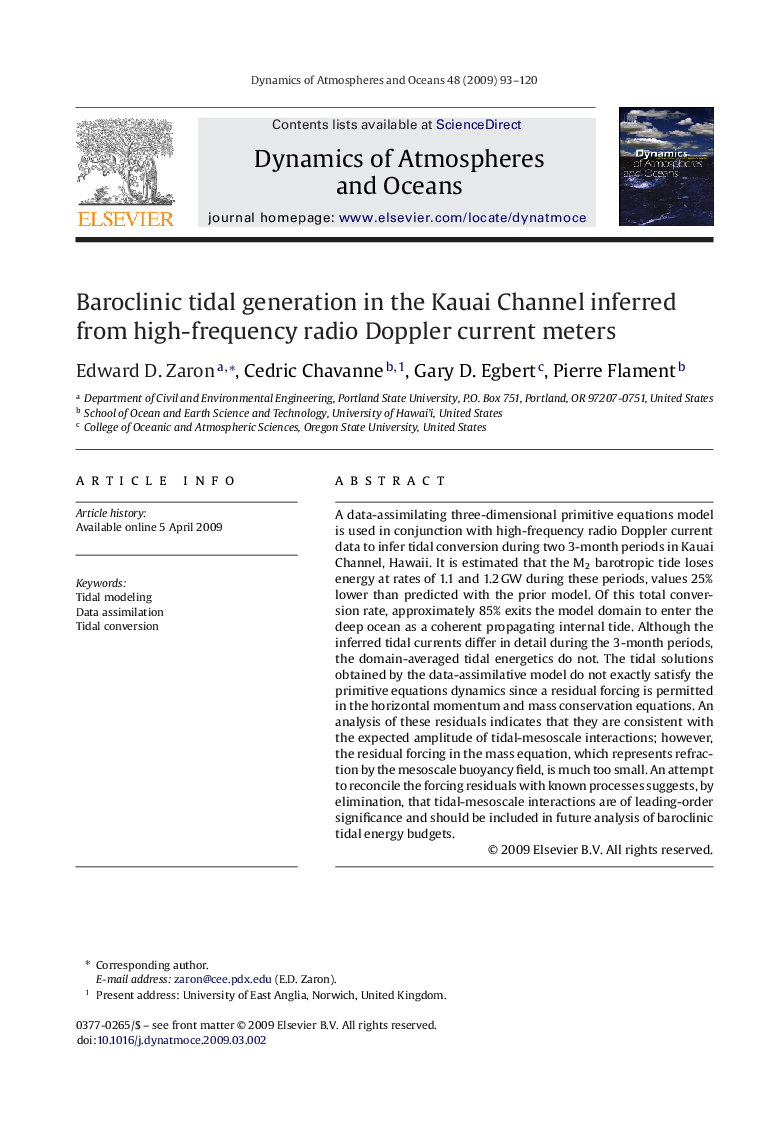| Article ID | Journal | Published Year | Pages | File Type |
|---|---|---|---|---|
| 4674153 | Dynamics of Atmospheres and Oceans | 2009 | 28 Pages |
A data-assimilating three-dimensional primitive equations model is used in conjunction with high-frequency radio Doppler current data to infer tidal conversion during two 3-month periods in Kauai Channel, Hawaii. It is estimated that the M2M2 barotropic tide loses energy at rates of 1.1 and 1.2 GW during these periods, values 25% lower than predicted with the prior model. Of this total conversion rate, approximately 85% exits the model domain to enter the deep ocean as a coherent propagating internal tide. Although the inferred tidal currents differ in detail during the 3-month periods, the domain-averaged tidal energetics do not. The tidal solutions obtained by the data-assimilative model do not exactly satisfy the primitive equations dynamics since a residual forcing is permitted in the horizontal momentum and mass conservation equations. An analysis of these residuals indicates that they are consistent with the expected amplitude of tidal-mesoscale interactions; however, the residual forcing in the mass equation, which represents refraction by the mesoscale buoyancy field, is much too small. An attempt to reconcile the forcing residuals with known processes suggests, by elimination, that tidal-mesoscale interactions are of leading-order significance and should be included in future analysis of baroclinic tidal energy budgets.
